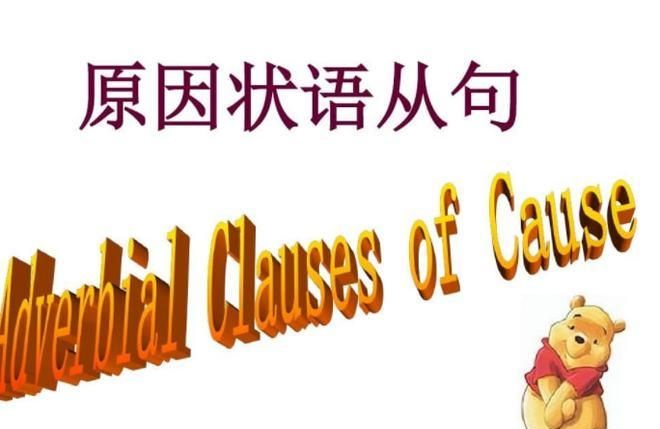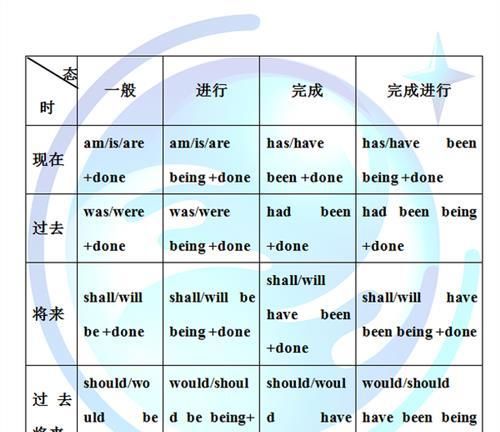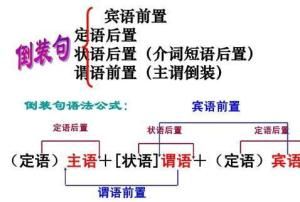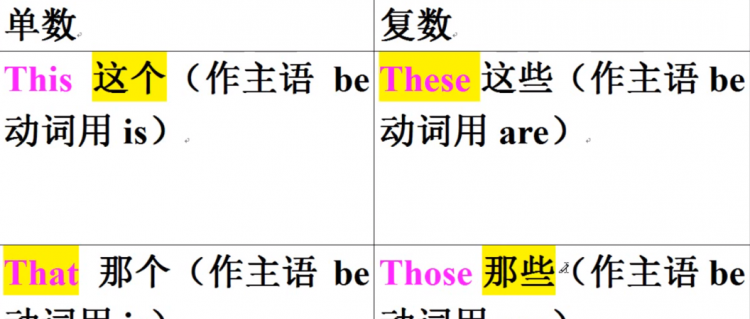本文目录
不拘于时是什么句式
这两个句子只能叫做状语后置句。
谓语是一个句子中的主干成分,如果说“谓语前置”,则是针对主语的位置而言,也就是主谓倒装,主谓倒装(前置谓语)是为了强调谓语所表示动作行为或性质状态,比如:1、举起手来!你给我。2、甚矣,汝之不惠。
“不拘于时,学于余”没有上面的情况,不能说成是谓语前置。

英语语法中的省略现象
1. 前置(fronting)的定义。
前置是一个用于实现 标识主题 (marked theme)作用的术语,实现手段是通过将某一项移入到句首位置,而移动后的位置显得与规范语序不一样。前置又称为 前置焦点( front-focus ) 或者 前置 (preposing)。
2. 前置的类型。
2.1 一种前置常常是一个完整的句子元素,前置原因可能是对已知的上下文做出的响应(echo)。
(You should take up swimming for relaxation)(你应该开始游泳放松了。)
Relaxation you call it. (你称它“放松”。)
换句话说,前置项可能是上下会话中最期望看到的项 ( 期望对方给出这样的回应 ):
Wilson his name is. 他的名字叫Wilson。
An utter fool she made me feet. 他让我变成一个十足的傻瓜。
Really good meals they serve at that hotel. 那家旅馆的饭菜真的很好。
似乎在提醒说话者,这个前置的主题元素是首要事项,会话的其余部分延迟考虑。 在英语书面语中可能会插入一个逗号,用以表明非主题部分几乎就是上下文环境中这种已知状态的放大标识 : Wilson, his name is .
指后照应 (cataphora)(又称顺向照应,指前文已有提及,这里再次提到,例如“前文所述”;常用的指后照应词有“that”,“the foregoing”)的“the foregoing”(“前述事项”)明显具有口语的味道,但是, 前置 (fronting) 在口语和传统写作资料中都非常通用,通常用于安排子句的顺序,以便使得句尾焦点落在信息的最重要的部分,并提供与已发生内容的直接联系 :
(1) That much the jury had thoroughly appreciated. (陪审团对此深表赞赏。)
还原为规范语序之一,如:The jury had that much thoroughly appreciated.
(2) Most of these problems a computer could take in its stride.
(这些问题中的大多数计算机都能轻而易举地解决。)
还原为规范语序之一,如:A computer could take in its stride most of these problems.
(3) This latter topic we have examined in Chapter 3 and need not reconsider.
后一个问题我们在第三章已经讨论过了,不需要再重新考虑。
还原为规范语序之一,如:We have examined this latter topic in Chapter 3 and need not reconsider.
(4) To this list may be added ten further items of importance.
(在这个清单上还可以再加上十项重要的事项。)
还原为规范语序之一,如:It may be added ten further items of importance to this list .
(5) This I shall prefer to call the SIGNIFICANCE or (more explicitly) TOTAL SIGNIFICANCE of a piece of language.
我更倾向于称其为一段语言的 意义 或(更明确地)一段语言的 全部意义 。
还原为规范语序之一,如:
I shall prefer to call this the SIGNIFICANCE or (more explicitly) TOTAL SIGNIFICANCE of a piece of language
在这些例子中的确定项that,this和these表明,以这种方式标识的主题通常更多用于表达已知的信息 。
2.2 在类似的场景中,常常发现使用-ing分词前置。
Sitting at her desk in deep concentration was my sister Flora. She looked as though she had spent a sleepless night.
我妹妹弗洛拉正聚精会神地坐在她的书桌前。她看上去好像度过了一个不眠之夜。
还原为规范语序之一,例如:
My sister Flora is sitting at her desk in deep concentration. She looked as though she had spent a sleepless night.
2.3 一种更为明显的前置出现在相当矫饰的修辞中,包括新闻写作的强烈色彩。常用于指出子句之间的两个成分,或者两个相邻子句之间相关但形成对比的部分之间的平行关系。这种前置部分可以从韵律学角度(prosodically)标识为标识主题(marked theme)或者标识焦点(marked focus),后者典型地带有分割焦点,在语法上,他们可以充当任何句法成分:
2.3.1 充当直接宾语或者介词补语(prepositional complement)(介词宾语和介词补语是一个意义,都是将介词短语的含义补充完整)。
His face not many admired (或 were enamoured of ),while his character still fewer could praise.
没有多少人迷恋/钦佩他的脸,而能赞扬他的性格的人就更少了。
还原为规范语序之一,如:
Not many admired (或 were enamoured of ) his face,while still fewer could praise his character.
2.3.2 充当主语补语或者宾语补语。
Traitor he has become and traitor we shall call him.
他已经变成了叛徒,我们应该叫他叛徒。
还原为规范语序之一,如:
He has become traitor, and we shall call him traitor.
2.3.3 充当谓语修饰语(predication adjunct)(或称状语)。
(1) Defiantly they have spoken but submissively they will accept my terms.
他们虽然嘴上很强硬,但将会顺从地接受我的条件。
还原为规范语序之一,如:
They have spoken defiantly but will accept my terms submissively.
(2) He might agree under pressure: willingly he never would.
他可能在压力下同意,但他绝不会心甘情愿地这么做。
还原为规范语序之一,如:
He might agree under pressure: he never would willingly.
(3) In London I was born and in London I shall die.
我生于London,也将在London去世。
还原为规范语序之一,如:
I was born in London and shall die in London.
2.3.4 充当谓语(predication)。
They have promised to finish the work,and finish it they will.
他们答应完成这项工作,他们一定会完成的。
还原为规范语序之一,如:
They have promised to finish the work,and they will (finish it).
括号部分其实可以省略。
2.3.5 另一种前置——倒装的情况。
对于谓语和谓语修饰语前置的情况,如果主语不是人称代词,我们经常发现它是主谓倒装结构 :
(1) Into the stifling smoke we plunged. (ASV结构,状语+主语+谓语结构)
我们跳入呛人的烟雾中。
还原为规范语序之一,如:
We plunged into the stifling smoke.
(2) Into the stifling smoke plunged the desperate mother.(VS结构,谓语+主语)
绝望的母亲跳进了呛人的烟雾中。
主谓倒装了。
像下面的句子,在新闻媒体中很通用,事实上,前置谓语在很大程度上似乎取决于将主语推到句尾焦点的期望,同时利用句子的提前部分“设置场景” :
(1) Addressing the demonstration was a quite elderly woman.
对示威发表讲话的是一位相当年长的妇女。
还原为规范语序之一,如:
A quite elderly woman was addressing the demonstration.
(2) Shot by nationalist buerrillas were two entirely innocent tourists.
被民族主义游击队枪杀的是两个完全无辜的游客。
还原为规范语序之一,如:
Two entirely innocent tourists were shot by nationalist buerrillas.
甚至对于分裂句(cleft sentence),本身是一种焦点策略,受前置的约束:
They hoped that Herbert Frost would be elected and Frost indeed it was that topped the poll.
他们希望Herbert Frost能当选,事实上,Frost在民意调查中高居榜首。
还原为规范语序之一,如:
They hoped that Herbert Frost would be elected and indeed it was Frost that topped the poll.
上面句中,it be + 名词/代词 that 强调结构,这是谓语主格,Frost是主语(或主语补语),可以看成逻辑主语,可以替换it,it是先行主语。把后一句单独拎出来分析:
It was Frost that topped the poll,正式一点应该是:it was Frost who topped the poll.
改写一下:
Frost topped the poll. (常规的主谓宾。)

怎样理解谓语前置句子
是谓语后置,后置一般是起强调的意思,比如:唯利是图”,正常语序是“唯图利“,但是为了强调”利“,所以语序发生了变化,但是这种语序的叫法是宾语前置,再比如“何陋之有”、“多情应笑我”

谓语提前的倒装句
英语么?
1 倒装句之全部倒装
全部倒装是只将句子中的谓语动词全部置于主语之前.此结构通常只用与一般现在时和 一般过去时.常见的结构有:
1) here, there, now, then, thus等副词置于句首, 谓语动词常用be, come, go, lie, run.
There goes the bell.
Then came the chairman.
Here is your letter.
2) 表示运动方向的副词或地点状语置于句首,谓语表示运动的动词.
Out rushed a missile from under the bomber.
Ahead sat an old woman.
注意:上述全部倒装的句型结构的主语必须是名词,如果主语是人称代词则不能完全倒装.
Here he comes. Away they went.
2 倒装句之部分倒装
部分倒装是指将谓语的一部分如助动词或情态倒装至主语之前.如果句中的谓语没有助动词或情态动词,则需添加助动词do, does或did,并将其置于主语之前.
1) 句首为否定或半否定的词语,如no, not, never, seldom, little, hardly, at no time, in no way, not until… 等.
Never have I seen such a performance.
Nowhere will you find the answer to this question.
Not until the child fell asleep did the mother leave the room.
当Not until引出主从复合句,主句倒装,从句不倒装.
注意: 如否定词不在句首不倒装.
I have never seen such a performance.
The mother didn't leave the room until the child fell asleep.
典型例题
1) Why can't I smoke here?
At no time___ in the meeting-room
A. is smoking permitted B. smoking is permitted
C. smoking is it permitted D. does smoking permit
答案A. 这是一个倒装问题.当否定词语置于句首以表示强调时,其句中的主谓须用倒装结构. 这些否定词包括no, little, hardly, seldom, never, not only, not until等.本题的正常语序是 Smoking is permitted in the meeting-room at no time.
2) Not until the early years of the 19th century ___ what heat is.
A. man did know B. man know C. didn't man know D. did man know
答案D. 看到Not until…的句型,我们知道为一倒装句,答案在C,D 中选一个.
改写为正常语序为,Man did not know what heat is until the early years of the 19th. 现在将not提前,后面就不能再用否定了,否则意思就变了.
3 以否定词开头作部分倒装
如 Not only…but also, Hardly/Scarcely…when, No sooner… than
Not only did he refuse the gift, he also severely criticized the sender.
Hardly had she gone out when a student came to visit her.
No sooner had she gone out than a student came to visit her.
典型例题
No sooner___ than it began to rain heavily.
A. the game began B. has the game begun
C. did the game begin D. had the game begun
答案D. 以具有否定意义的副词放在句首时,一般采用倒装句(谓语前置).这类表示否定意义的词有never, seldom, scarcely, little, few, not, hardly, 以及not only…but (also), no sooner…than, hardly… when scarcely… when 等等.
注意:只有当Not only… but also连接两个分句时,才在第一个分句用倒装结构.如果置于句首的Not only… but also仅连接两个并列词语,不可用倒装结构.
Not only you but also I am fond of music.
4 so, neither, nor作部分倒装
表示"也"、"也不" 的句子要部分倒装.
Tom can speak French. So can Jack.
If you won't go, neither will I.
典型例题
---Do you know Jim quarrelled with his brother?
---I don't know, _____.
A. nor don't I care B. nor do I care C. I don't care neither D. I don't care also
答案:B. nor为增补意思"也不关心",因此句子应倒装.A错在用 don't 再次否定, C neither 用法不对且缺乏连词. D缺乏连词.
注意: 当so引出的句子用以对上文内容加以证实或肯定时,不可用倒装结构.意为"的确如此".
答案D. 由于How 修饰形容词,副词;what修饰名词.且food为不可数名词,因此A,B 排除.C How + adj. 后面不能再加名词,因此只有D正确,其句型为What + adj. +n. (不可数)
2)___terrible weather we've been having these days!
A. What B. What a C. How D. How a
答案A. weather为不可数名词,B,D排除.C为how + adj. 后面不应有名词.只有A,符合句型What +形容词+不可数名词.
3) --- _____ I had!
--- You really suffered a lot.
A. What a time B. What time C. How a time D. how time
答案A. 感叹句分两类:
1:What + n.+主谓部分
2:How + adj. / adv. / v.+主谓部分.本题属第一种,但省略了bad,相对于 What a bad time I had! 这是个习惯用语.
3 强调句结构
常考的强调句结构是it 引导的句子.
It is (was) 被强调部分+ that (who) + 句子其他部分.
此结构强调的成分仅限于主语,宾语和状语.
It is from the sun that we get light and heat.
It was not until I had read your letter that I understood the true state of affairs.
4 用助动词进行强调
强调句还有一种类型,就是用助动词do (did,does) 强调谓语.
She does like this horse. 她的确喜欢这匹马.
Please do take care of yourself. 千万保重.
5 反意疑问句
1) 陈述部分的主语是I,疑问部分要用 aren't I.
I'm as tall as your sister,aren't I?
2) 陈述部分的谓语是wish,疑问部分要用may +主语.
I wish to have a word with you, may I?
3) 陈述部分用 no, nothing, nobody, never, few, seldom, hardly, rarely, little等否定含义的词时,疑问部分用肯定含义.
The Swede made no answer, did he / she?
Some plants never blown (开花), do they ?
4) 含有ought to 的反意疑问句,陈述部分是肯定的,疑问部分用shouldn't / oughtn't +主语.
He ought to know what to do, oughtn't he? / shouldn't he?
5) 陈述部分有have to +v. (had to + v.),疑问部分常用don't +主语(didn't +主语).
We have to get there at eight tomorrow, don't we?
6) 陈述部分的谓语是used to 时,疑问部分用didn't +主语或 usedn't +主语.
He used to take pictures there, didn't he? / usedn't he?
7) 陈述部分有had better + v. 疑问句部分用hadn't you?
You'd better read it by yourself, hadn't you?
8) 陈述部分有would rather +v.,疑问部分多用 wouldn't +主语.
He would rather read it ten times than recite it, wouldn't he?
9) 陈述部分有You'd like to +v. 疑问部分用wouldn't +主语.
You'd like to go with me, wouldn't you?
10) 陈述部分有must 的疑问句,疑问部分根据实际情况而定.
He must be a doctor, isn't he?
You must have studied English for three years, haven't you? / didn't you?
He must have finished it yesterday, didn't he?
11) 感叹句中,疑问部分用be +主语.
What colours, aren't they?
What a smell, isn't it?
12) 陈述部分由neither… nor, either… or 连接的并列主语时,疑问部分根据其实际逻辑意义而定.
Neither you nor I am engineer, are we?
13) 陈述部分主语是指示代词或不定代词everything, that, nothing, this, 疑问部分主语用it.
Everything is ready, isn't it?
14) 陈述部分为主语从句或并列复合句,疑问部分有三种情况:
a. 并列复合句疑问部分,谓语动词根据邻近从句的谓语而定.
Mr. Smith had been to Beijing for several times, he should have been in China now, shouldn't he?
b. 带有定语从句,宾语从句的主从复合句,疑问部分谓语根据主句的谓语而定:
He is not the man who gave us a talk, is he?
He said he wanted to visit Japan, didn't he?
c. 上述部分主句谓语是think, believe, expect, suppose, imagine等引导的定语从句,疑问部分与宾语从句相对应构成反意疑问句.
I don't think he is bright, is he?
We believe she can do it better, can't she?
15) 陈述部分主语是不定代词everybody, anyone, somebody, nobody, no one等,疑问部分常用复数they,有时也用单数he.
Everyone knows the answer, don't they? (does he?)
Nobody knows about it, do they? (does he?)
16) 带情态动词dare或need的反意疑问句,疑问部分常用 need (dare ) +主语.
We need not do it again, need we ?
He dare not say so, dare you?
当dare, need 为实义动词时,疑问部分用助动词do + 主语.
She doesn't dare to go home alone, does she?
17) 省去主语的祈使句的反意疑问句,疑问部分用will you.
Don't do that again, will you?
Go with me, will you / won't you ?
注意: Let's 开头的祈使句,后用shall we?
Let us 开头的祈使句,后用will you?
Let's go and listen to the music, shall we?
Let us wait for you in the reading-room, will you ?
18) 陈述部分是"there be"结构的,疑问部分用there省略主语代词.
There is something wrong with your watch, isn't there?
There will not be any trouble, will there?
19) 否定前缀不能视为否定词,其反意疑问句仍用否定形式.
It is impossible, isn't it?
He is not unkind to his classmates, is he?
20) must在表"推测"时,根据其推测的情况来确定反意疑问句.
He must be there now, isn't he?
It must be going to rain tomorrow, won't it?
快速记忆表
陈述部分的谓语 疑问部分
I aren't I
Wish may +主语
no,nothing,nobody,never,
few, seldom, hardly, 肯定含义
rarely, little等否定
含义的词
ought to(肯定的) shouldn't/ oughtn't +主语
have to+v.(had to+v.) don't +主语(didn't +主语)
used to didn't +主语或 usedn't +主语
had better + v. hadn't you
would rather + v. wouldn't +主语
you'd like to + v. wouldn't +主语
must 根据实际情况而定
感叹句中 be +主语
Neither…nor,
either…or 连接的根 据其实际逻辑意义而定
并列主语
指示代词或不定代词
everything,that, 主语用it
nothing,this
并列复合句 谓语根据邻近从句的谓语而定
定语从句,宾语从句的
主从复合句 根据主句的谓语而定
think,believe,expect,
suppose,imagine等引导 与宾语从句相对应的从句
everybody,anyone,
somebody,nobody,no one 复数they, 单数he
情态动词dare或need need (dare ) +主语
dare, need 为实义动词 do +主语
省去主语的祈使句 will you?
Let's 开头的祈使句 Shall we?
Let us 开头的祈使句 Will you?
there be 相应的谓语动词+there(省略主语代词)
否定前缀不能视为否定词 仍用否定形式
must表"推测" 根据其推测的情况来确定反意疑问句
典型例题
1) It was last night ___ I see the comet.
A. the time B. when C. that D. which
答案C. 强调句的结构是: It +be +强调部分 + that (who) + 主谓句. 强调句的连词只有两个,that和who.当强调的部分是人,且为句子的主语时,才用 "who",其余用that.
原句: My father did the experiment in the lab yesterday evening.
强调主语: It was my father who did the experiment in the lab yesterday evening.
强调宾语: It was the experiment that my father did in the lab yesterday evening.
强调时间: It was yesterday evening that my father did the experiment in the lab. (注意不用when)
强调地点: It was in the lab that my father did the experiment yesterday evening.
2)It is ten years ___ Miss Green returned to Canada.
A. that B. when C. since D. as
答案C. 考点是连词用法. 本题易误选为A. that. 其实本句不是强调句.若是,去掉It be… that还应是一个完整的句子.而本句去掉 'It is…that',只剩下ten years Miss Green returned to Canada. 不成句.因此本句不是强调句.

以上就是关于英语中谓语前置,不拘于时是什么句式的全部内容,以及英语中谓语前置 的相关内容,希望能够帮到您。

